10 At-Home Exercises for Multiple Sclerosis
Content created for the Bezzy community and sponsored by our partners. Learn More

Exercise offers a long list of benefits, ranging from mental to physical. If you’re living with MS it can also help control symptoms like exhaustion and brain fog. The key is finding the right balance.
It isn’t always easy to stay active, especially when you’re managing symptoms of multiple sclerosis, like pain and fatigue. But some simple exercises you can do at home can have a significant impact on your health and symptom management.


Why is exercise important when living with multiple sclerosis?
“Exercise reliably improves aerobic and muscular fitness, walking and balance outcomes, symptoms of fatigue and depression, and quality of life,” said Dr. Robert Motl, a professor at the University of Illinois Chicago and researcher on the effects of physical activity and exercise on MS.
He also mentioned positive effects on anxiety and pain, and that movement can improve quality of life specifically for those with MS.
Tons of research backs up these movement advantages for those with MS, including one 2020 meta-analysis, which found that regular physical activity can reduce fatigue that stems from the disease.
Exercise also helps stave off illnesses like heart disease and diabetes and promotes bone density.
“Some of the treatments and side effects of MS, some factors that we would normally be of concern for adults, like bone density, may be even more important for someone with MS,” said Dr. Carol Ewing Garber, program director of applied physiology at the Teachers College, Columbia University.
Exercise can help those with MS function at their best, improving physical limitations and cognitive effects, like brain fog and mood challenges.
“It might feel counterintuitive for fatigue because if you’re so exhausted, you can’t do anything. But if you actually get up and move, it can make you feel better,” she adds.
How should you exercise with multiple sclerosis?
While getting up and moving can feel like a lot of effort, Garber says doing so every day (even for just 10 minutes) can help.
That movement can include anything — like sitting in your chair and stretching, practicing yoga, tai chi, or Pilates, or getting up for a 30-minute walk.
What you want to look out for, however, is not doing so much that you’re super tired the next day.
“The thing you want to avoid is going all out because one day you might feel great, but then you can do too much,” Garber says.
The key is to start slow, progress gradually, and move according to how you feel.
“It is important to pay attention to how you feel afterward because you should feel better. Your muscles might be tired, that’s normal, but not so tired that you can’t function,” she says.
Motl also suggests avoiding exercises that up your risk of falling.
10 multiple sclerosis-friendly exercises you can do at home
This list of gentle resistance training exercises is a great starting point for those with multiple sclerosis, Garber says.
After you get the proper form down, you can up the ante using light ankle weights for your lower body moves and light weights or resistance bands for your upper body.
As you become more comfortable with each move, you can add more weight, as long as you maintain technique.
Go for 8 to 15 reps of the moves below and start with one set, adding more sets as you get stronger.
1. Cat-Cow
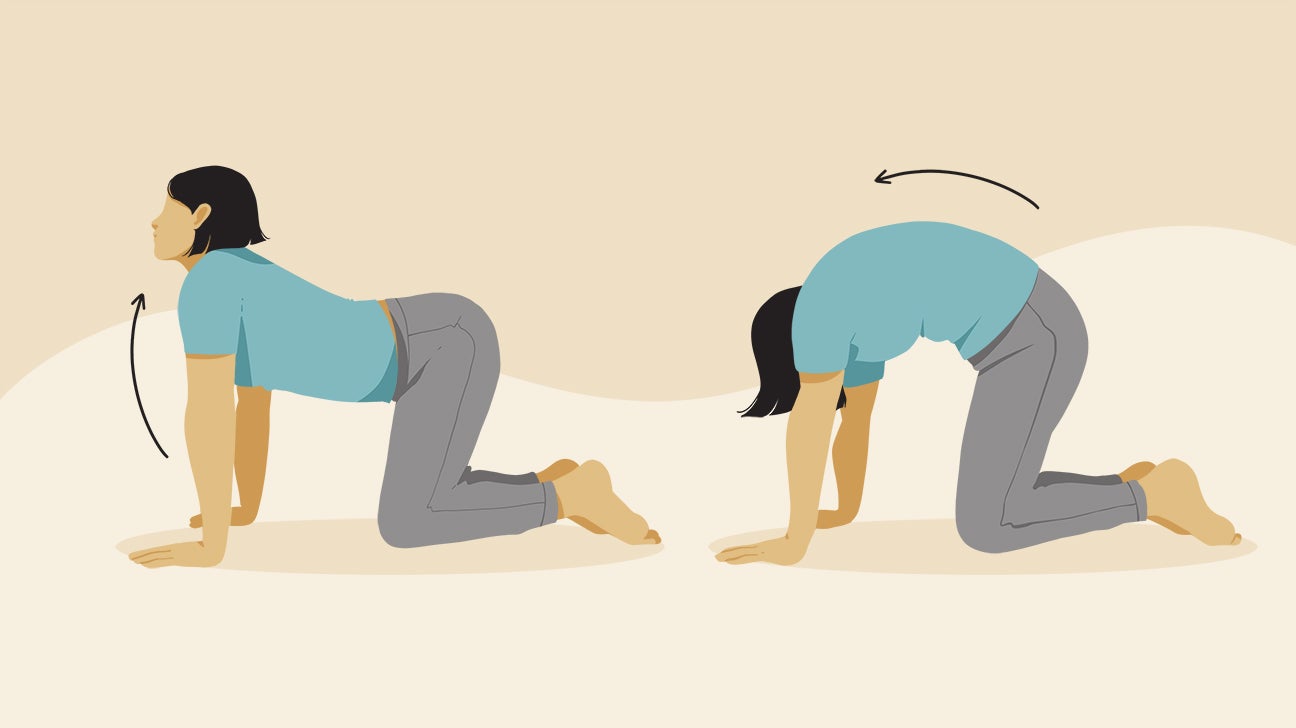
- Begin on your hands and knees in an all-fours position, with your shoulders over your wrists and your knees under your hips.
- Inhale as you arch your back, lifting your tailbone, head, and chest.
- Exhale as you round your back, tucking your chin to your chest and drawing your belly button up toward your spine. Repeat.
2. Bridge
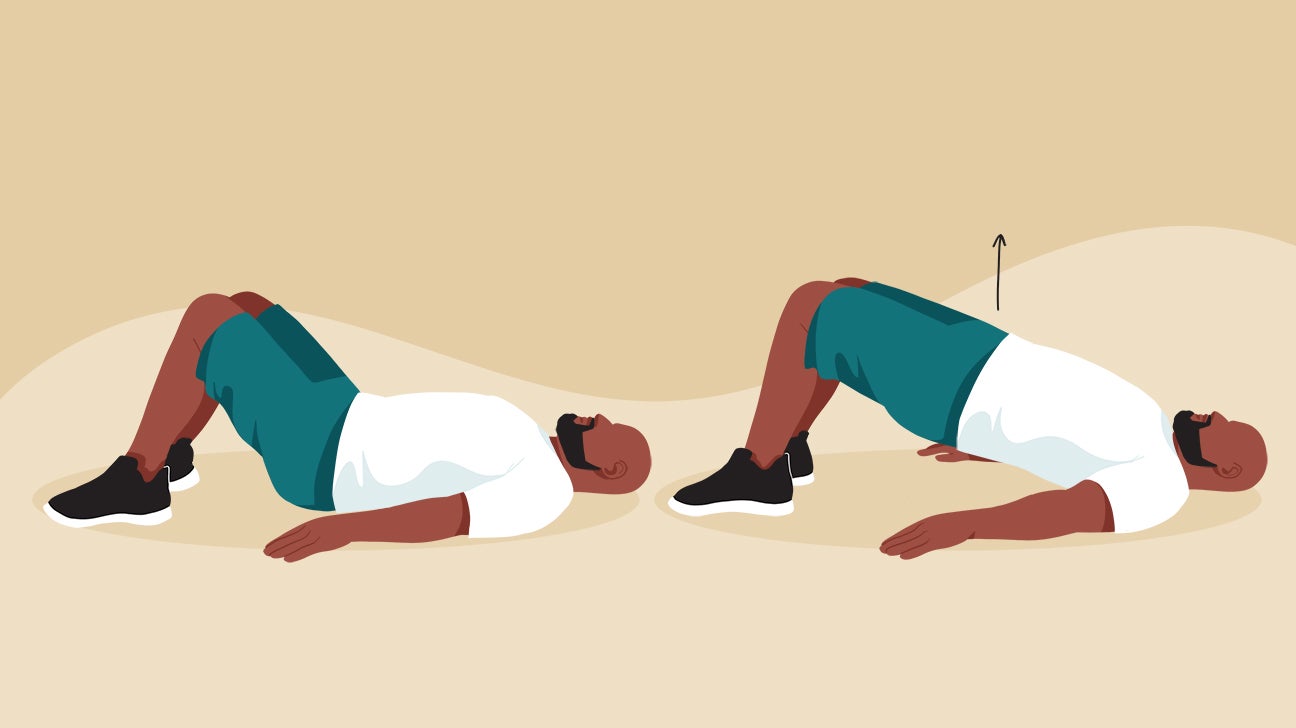
- Begin by lying on your back on the floor or a mat, with your knees bent and feet flat on the floor with your arms down by your sides.
- Squeeze your butt and raise your hips off the floor to form a bridge.
- Hold for a few breaths, then slowly lower back down. Repeat.
3. Pelvic tilt
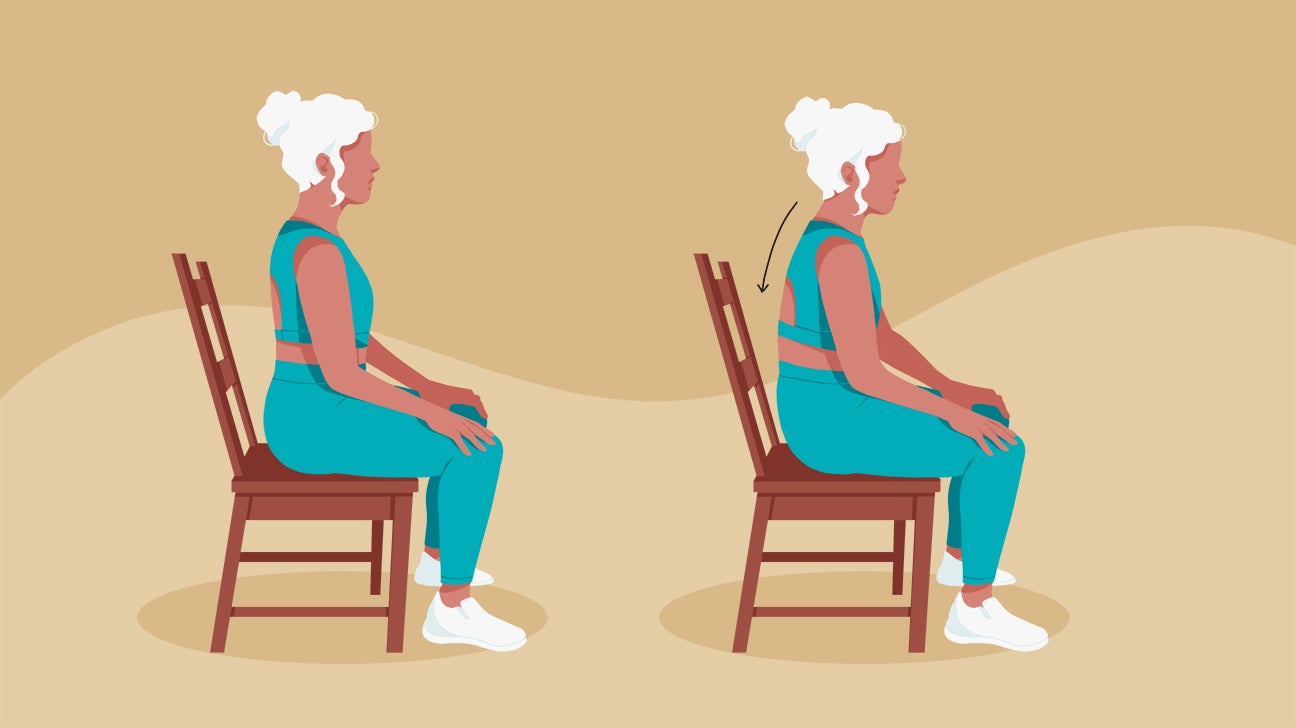
- Begin by sitting straight in a chair, arms relaxed down by your sides. Look straight ahead, with your head, shoulders, and hips in one straight line.
- Take a deep breath in to fill your lungs fully, then slowly exhale and pull your stomach muscles in, slowly curving your pelvis under you while pushing your lower back into the chair. You should form a C-curve position with your spine.
- Hold for 3 to 5 seconds, then slowly inhale as you straighten your spine and move your chest up toward the ceiling. Push your bottom back, forming as ‘S’ shape in the spine. Hold for 3 to 5 seconds then return to the starting position to repeat exercise.
4. Front arm raise
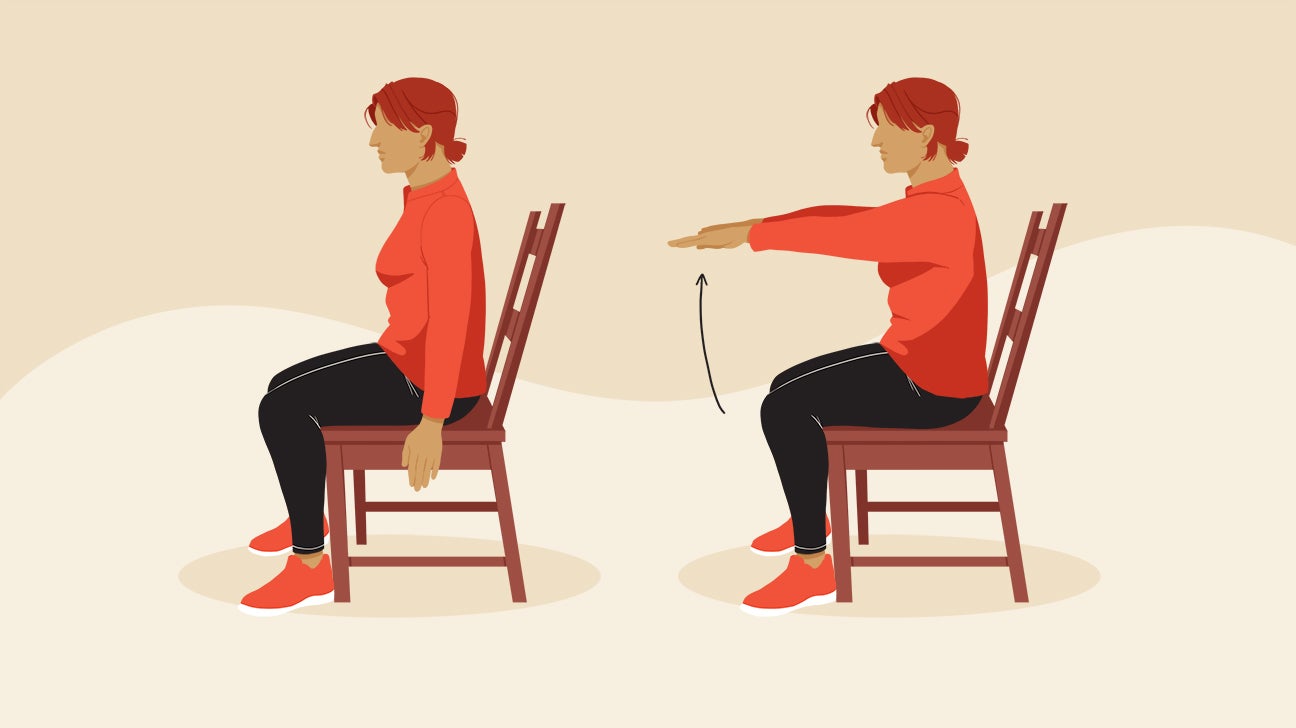
- Begin by sitting straight up in a chair, arms relaxed down by your sides. Look straight ahead, with your head, shoulders, and hips in one straight line.
- Extend your arms straight out in front of you to shoulder height, palms facing down.
- Then lower back down to your sides and repeat.
5. Overhead arm raise
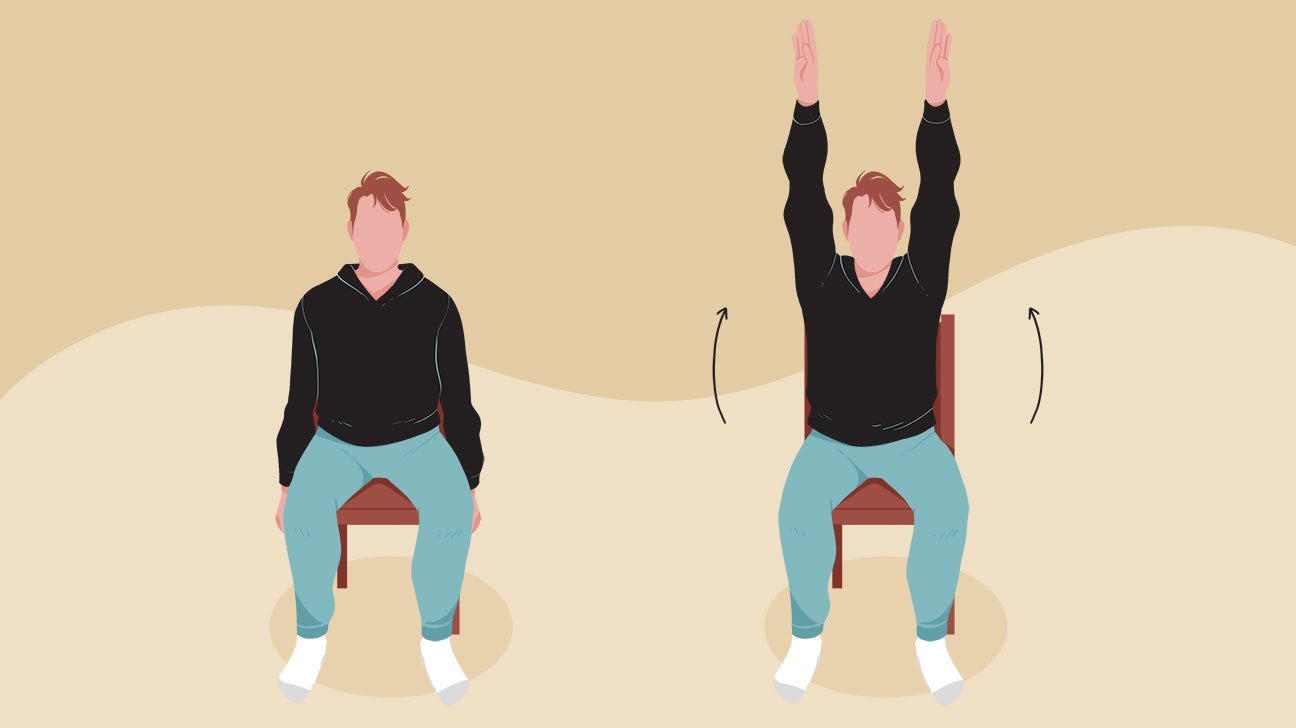
- Begin by sitting straight up in a chair, arms relaxed down by your sides. Look straight ahead, with your head, shoulders, and hips in one straight line.
- Slowly raise your arms overhead, biceps in line with ears, palms facing away from you. Keep your elbows and wrists straight and shoulders relaxed away from your ears.
- Lower your arms back down to your sides and repeat.
6. Side arm raise
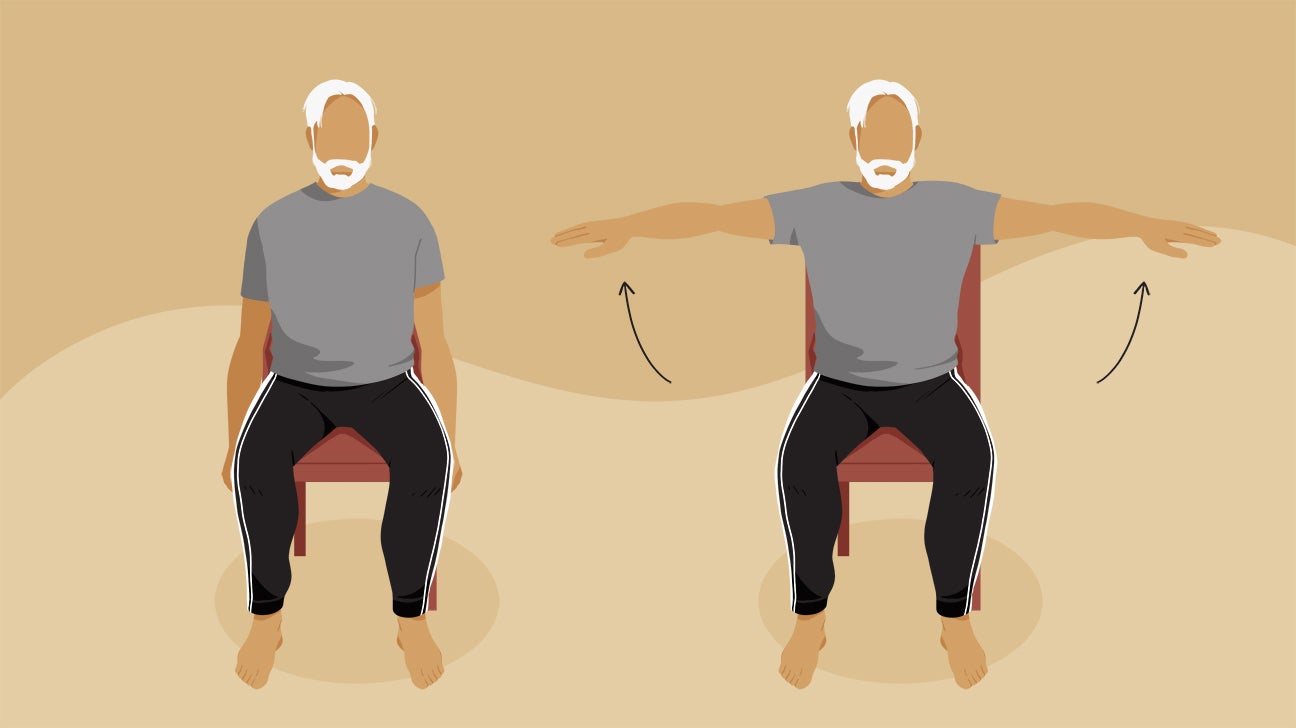
- Begin by sitting straight up in a chair, arms relaxed down by your sides. Look straight ahead, with your head, shoulders, and hips in one straight line.
- Slowly raise your arms out to the sides to shoulder height, palms facing down.
- Lower your arms back down to your sides and repeat.
7. Wrist flexion
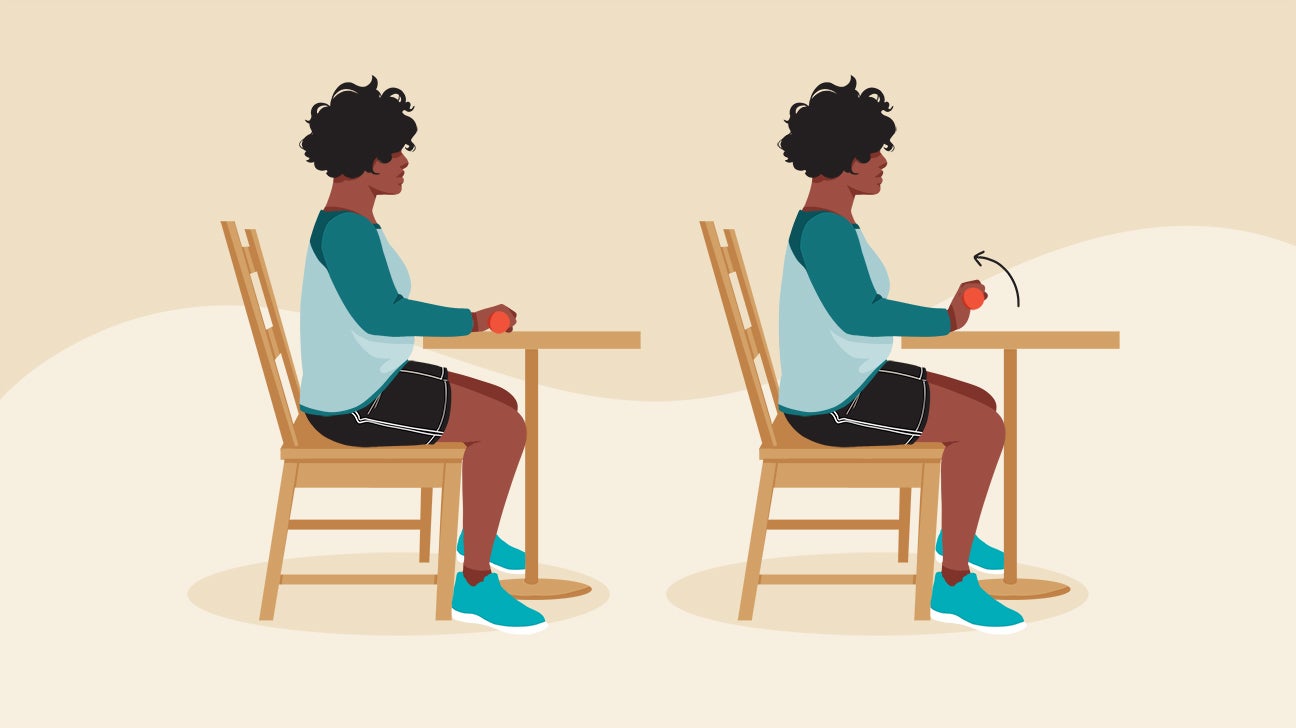
- Begin by sitting straight in a chair, arms relaxed down by your sides. Look straight ahead, with your head, shoulders, and hips in one straight line.
- To start, hold a rolling pin, umbrella, or 1-pound weight in each hand. Place your forearms on a table in front of you, palms facing down.
- Lift the object by extending your wrist and pulling your hands toward you. Keep your forearms on the table.
- Lower back down and repeat.
8. Forearm rotation
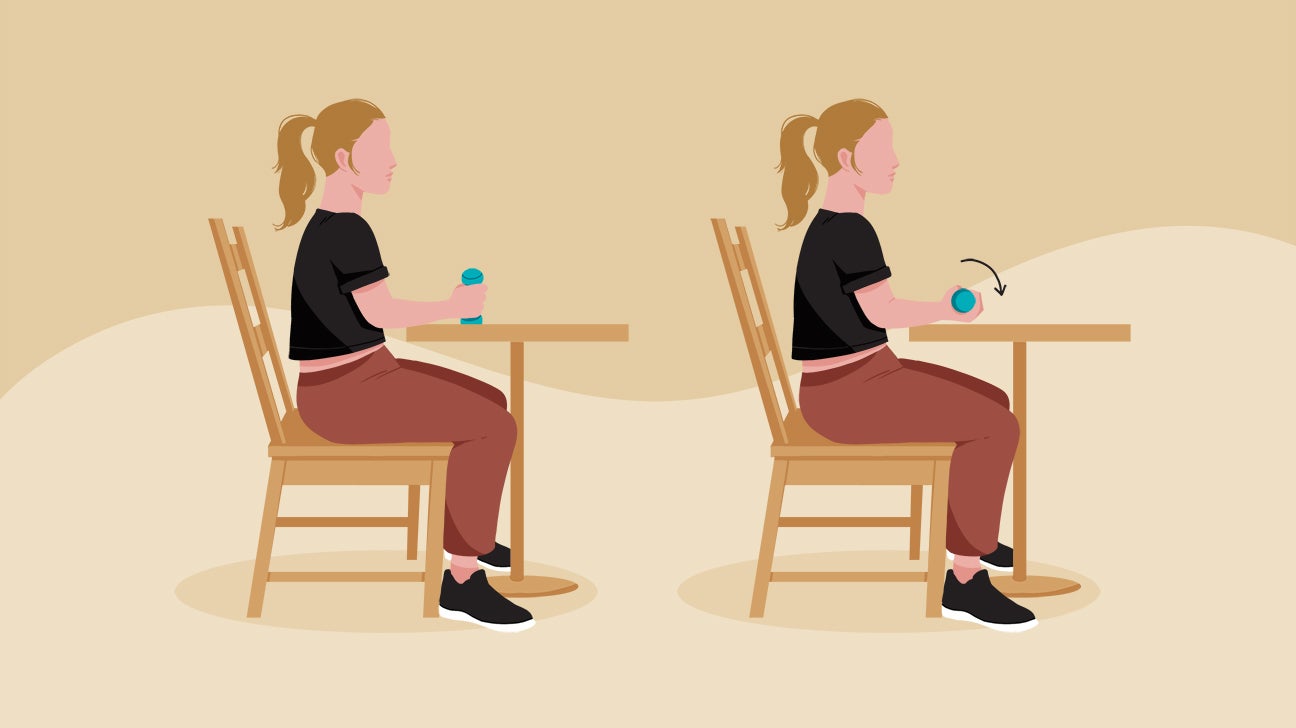
- Begin by sitting straight up in a chair, arms relaxed down by your sides. Look straight ahead, with your head, shoulders, and hips in one straight line.
- To start, hold a rolling pin, umbrella, or 1-pound weight vertically in one hand, palm facing inward, and forearm on a table in front of you.
- Keeping your forearm in contact with the table, rotate your forearm outward, bringing the object toward the table.
- Raise the object back up toward center and as far as possible inward toward the table.
- Repeat, alternating sides and moving slowly to keep the object from flopping.
- Switch hands and repeat.
9. Sit to stand
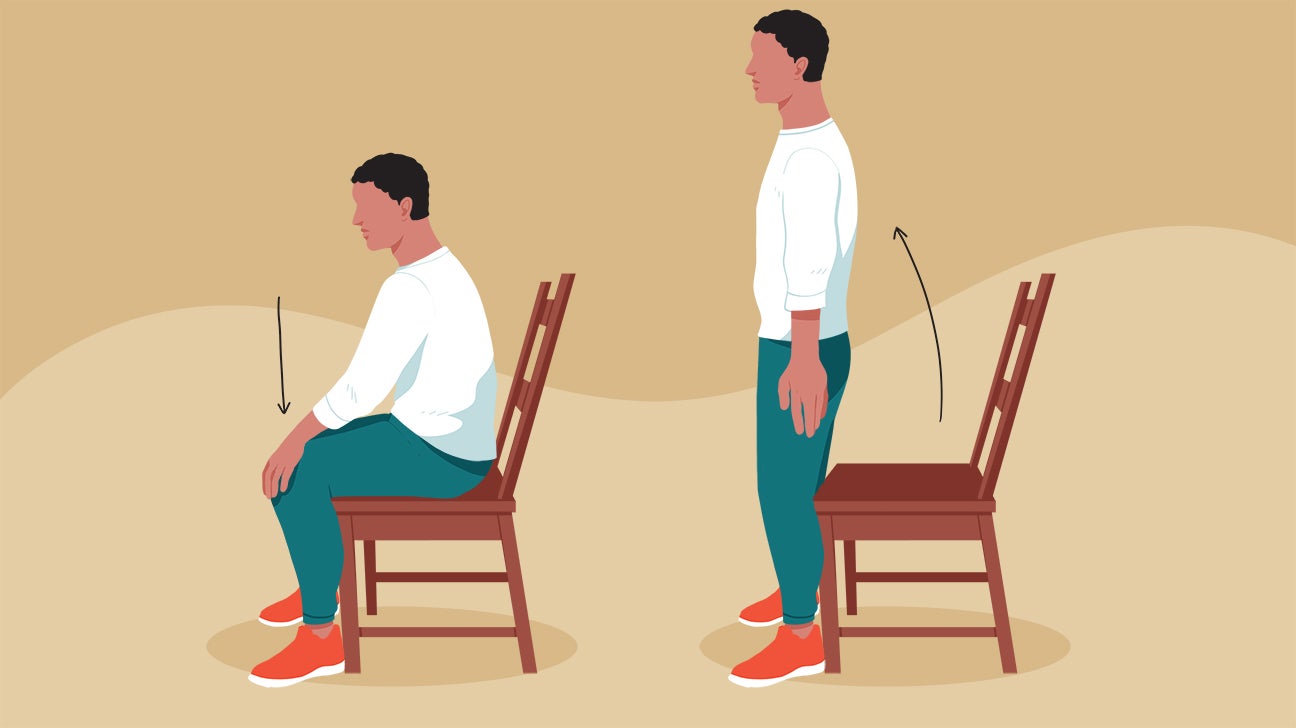
- Begin by sitting tall in a chair, on the couch, or on a bench. Look straight ahead, with your head, shoulders, and hips in one straight line.
- Place your hands on your knees and push down through your hands as you simultaneously push through your feet to stand up tall.
- Push your butt and hips back as you slowly sit back down, hands coming back on your knees. Repeat.
10. Side leg raise
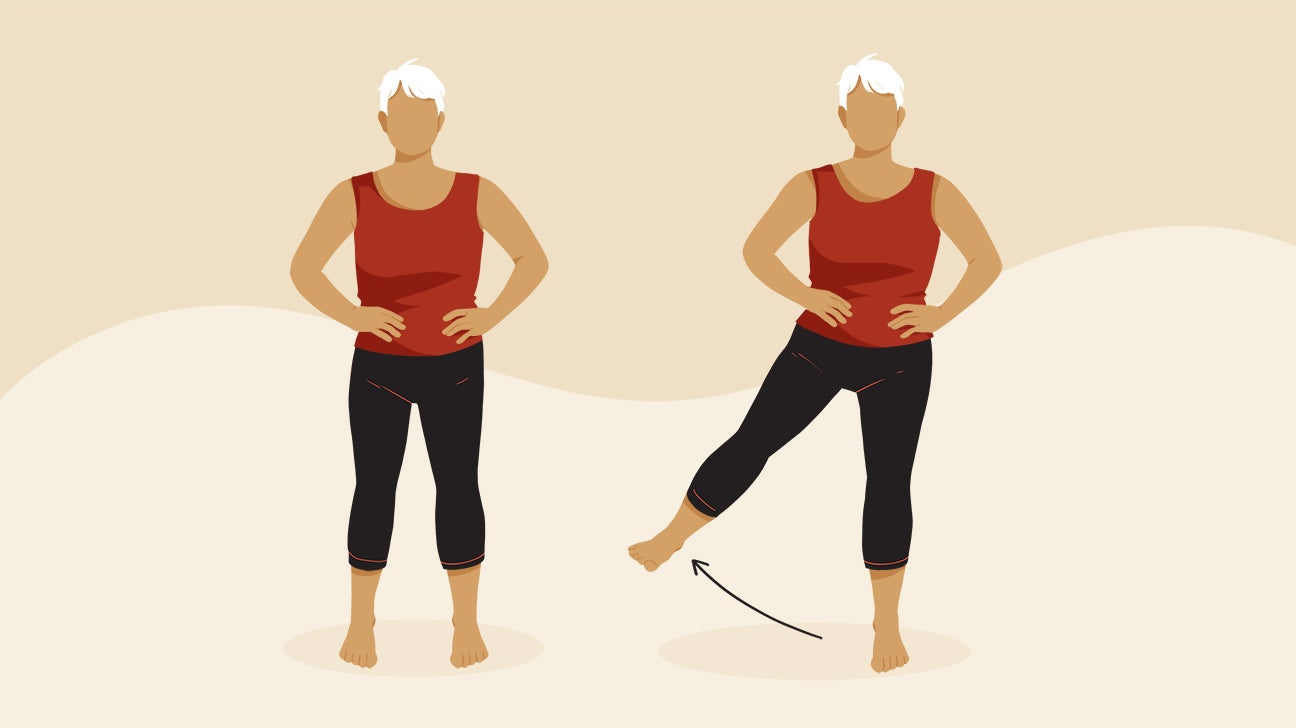
- Begin by standing with your feet slightly apart, weight evenly distributed on both feet.
- Lift your right leg out to the side, keeping your knee straight and toes pointing forward. Hold.
- Slowly lower back down and repeat.
- Switch legs and repeat.
Before you get started
As always, it’s best to chat with your doctor or physical therapist before starting any exercise routine. And if you’re experiencing a flare up, Garber says it’s probably best to back off of exercise a bit.
Originally written May 29, 2020
Medically reviewed on June 27, 2024
4 Sources


Like the story? React, bookmark, or share below:
Have thoughts or suggestions about this article? Email us at article-feedback@bezzy.com.
About the author